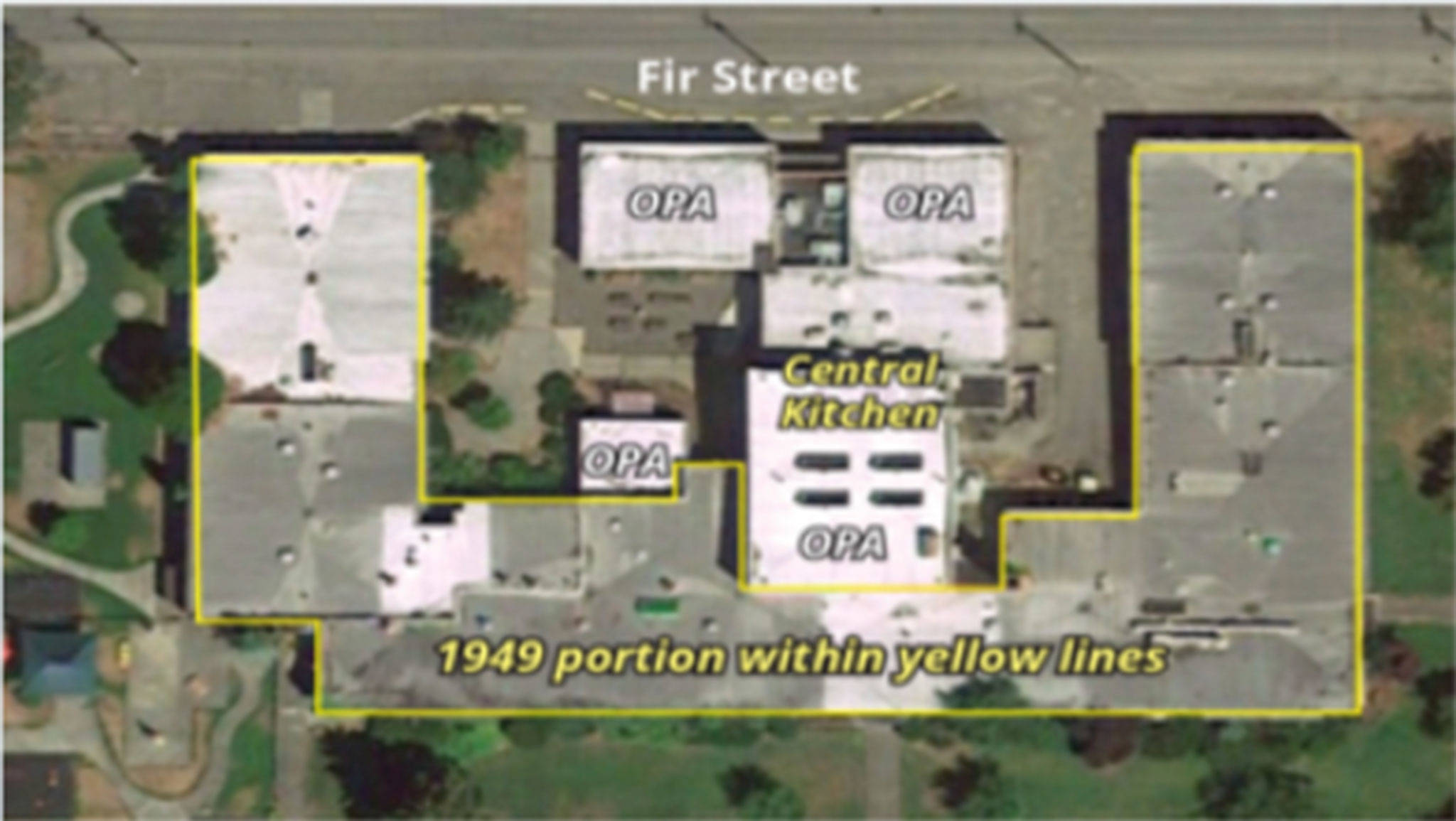The Sequim School District is slowly making progress toward renovating the district kitchen and demolishing the unused portions of the Sequim Community School with some minor adjustments for a leaky roof and hazardous materials.
Sequim schools superintendent Gary Neal said there is some repair that needs to be done to part of the roof covering the school’s cafeteria that the district decided not to demolish for the time being.
“We’re trying to have the least amount of disruption possible for the students,” Neal said.
He said this portion of the school was going to be part of the demolition process but will remain standing for now, as it also houses some classes at Olympic Peninsula Academy.
Neal said a third party organization recently performed a materials survey of the community school — one that was built in 1949 and saw portions closed in 2012 when it was found to be unsafe for students — for the district’s construction manager Vanir Construction Management, Inc., and found there are some hazardous materials that need to be removed from the building prior to deconstruction and demolition.
“Once they get (the survey) back, it gives them an idea of how they are going to proceed with the abatement,” Neal said.
He said the survey also provides guidelines for the permitting process and how the materials should be handled.
Neal included in a presentation to Sequim city council the district’s current renovation and demolition status of the district kitchen and community school at the meeting on Dec. 11.
“When you go to deconstruct it, there’s going to be some hazardous problems,” Neal told city councilors.
“One of the biggest ones that we have to deal with is the abatement of asbestos and lead in our paint.”
Neal said there will be containment measures in place to make it safe for students on campus while the hazardous materials are extracted from the community school.
Bernie O’Donnell, Northwest Area development manager for Vanir said this is a typical asbestos abatement project.
“It’s all normal stuff,” O’Donnell said. “We have to abate it and dispose of it before we can do any kind of construction.”
O’Donnell said the site will be isolated with double containment of the areas and air monitoring in the adjacent areas to handle asbestos abatement.
“There is a double containment so if there’s a hole in containment it doesn’t blow anything out,” he said.
“So if there was something to happen there’s another containment area.”
He added everything is bagged up, crews will wear tie back suits during abatement and its all done behind closed doors and in area where students are not occupying.
Neal said there are state, city and county regulations to consider, and that it’s going to take some time to meet those guidelines before abatement starts.
“We want to make sure we have everything taken care of before we get into this,” Neal said. “Once that starts to happen, (demolition) is going to go relatively quickly.”
Once the asbestos and lead paint is removed from the building then Vanir can proceed with deconstruction and demolition, Neal said.
“That’s the biggest reason it hasn’t been torn down yet.”
He said the demolition crew will come in and demolish one portion of the school at a time as abatement is completed.
O’Donnell said the construction company is going to deconstruct and reuse the materials that it can in the process in addition to demolition.
“Part of the demolition package is to encourage them to be environmentally responsible and repurpose what they can,” he said.
Neal said there is a general schedule as to when abatement and demolition will be complete, but there is not an official timeline of completion as there may be some adjustments due to how long abatement takes and more problems that may arise once abatement starts.
O’Donnell said the project should be completed before the next school year. He added that once the project is completed it will be a clean site so that if new construction takes place it won’t be impacted by what was previously built there.
Once demolition is completed, the district can apply for state matching funds, Neal said, and can use the space where the community school once stood.
“The main thing is that’s counting against us and we want to use that space,” Neal said.
“Ultimately the plan is once we get a construction bond approved then that square footage from the existing community school will not count towards our infrastructure,” he said. “And the state will appropriate money for that facility space for our district.”
Neal said the money apportioned from the state for the community school would then be deducted from what’s needed for a bond.



